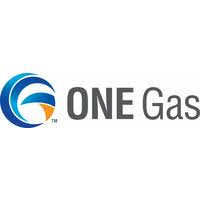
ONE Gas, Inc. in Tulsa announced second quarter 2019 earnings this week including net income of $24.5 million or 46 cents a diluted share. It was an increase from the $20.4 million and 39 cents a share reported in the second quarter of 2018.
The company stated that its net income so far in 2019 is $118.1 million or $2.22 a share, more than the $111.3 million and $2.10 a share reported at this time last year.
“In the second quarter, we continued to see the positive impact of new rates on our net margin as a result of capital expenditures on system integrity and expansion, somewhat offset by overall warmer weather,” said Pierce H. Norton II, president and chief executive officer. “In addition, operating costs were slightly lower than the same period last year, as we maintain our focus on managing expenses while safely and reliably serving our customers.”
ONE Gas reported operating income of $46.9 million in the second quarter 2019, compared with $41.0 million in the second quarter 2018.
Net margin, which is comprised of total revenues less cost of natural gas, increased by $9.6 million compared with second quarter 2018, which primarily reflects:
- A $10.4 million increase from new rates; and
- A $1.5 million increase attributed to net residential customer growth in Oklahoma and Texas; offset by
- A $2.0 million decrease due to lower sales volumes, net of weather normalization, primarily in Kansas.
Second-quarter 2019 operating costs were $116.1 million, compared with $117.6 million in the second quarter 2018, due primarily to a $2.7 million decrease in employee-related expenses.
Depreciation and amortization expense for the second-quarter 2019 was $45.0 million, compared with $39.8 million in the second quarter 2018, due primarily to an increase in depreciation expense from capital investments placed in service, higher depreciation rates in Kansas and an increase in the amortization of the ad-valorem surcharge rider in Kansas.
For the second-quarter 2019, other expense, net, decreased $1.3 million compared with the same period last year, due primarily to earnings on investments associated with nonqualified employee benefit plans, which offset the increase in costs for the plans included in operating costs.
Key Statistics: More detailed information is listed in the tables.
- Actual heating degree days across the company’s service areas were 581 in the second quarter 2019, 9% warmer than normal and 32% warmer than the same period last year;
- Actual heating degree days in the Oklahoma service area were 188 in the second quarter 2019, 2% warmer than normal and 44% warmer than the same period last year;
- Actual heating degree days in the Kansas service area were 342 in the second quarter 2019, 14% warmer than normal and 30% warmer than the same period last year;
- Actual heating degree days in the Texas service area were 51 in the second quarter 2019, 2% warmer than normal and 46% colder than the same period last year;
- Residential natural gas sales volumes were 13.4 billion cubic feet (Bcf) in the second quarter 2019, down 14% compared with the same period last year;
- Total natural gas sales volumes were 18.9 Bcf in the second quarter 2019, down 13% compared with the same period last year;
- Natural gas transportation volumes were 51.4 Bcf in the second quarter 2019, down 1% compared with the same period last year; and
- Total natural gas volumes delivered were 70.3 Bcf in the second quarter 2019, down 4% compared with the same period last year.
YEAR-TO-DATE 2019 FINANCIAL PERFORMANCE
Operating income for the six-month 2019 period was $174.5 million, compared with $171.3 million for the same period last year.
Net margin increased by $17.5 million compared with the same period last year, which primarily reflects:
- A $14.3 million increase from new rates in Kansas and Texas;
- A $2.9 million increase attributed to net residential customer growth in Oklahoma and Texas; and
- A $1.3 million increase due to higher sales volumes, net of weather normalization, in Texas; offset by
- A $0.9 million decrease due to a compressed natural gas federal excise tax credit that was enacted in February 2018 and retroactive to 2017.
Operating costs for the six-month 2019 period were $240.6 million, compared with $236.4 million for the same period last year, which primarily reflects:
- A $1.9 million increase in legal-related expenses; and
- A $1.6 million increase in employee-related expenses.
Depreciation and amortization expense for the six-month 2019 period was $88.8 million, compared with $78.7 million for the same period last year, due primarily to an increase in depreciation expense from capital investments placed in service, higher depreciation rates in Kansas and an increase in the amortization of the ad-valorem surcharge rider in Kansas.
For the six-month 2019 period, other expense, net, decreased $3.9 million compared with the same period last year, due primarily to earnings on investments associated with nonqualified employee benefit plans, which offset the increase in costs for the plans included in operating costs.
Interest expense increased $6.8 million for the six-month 2019 period compared with the same period last year, resulting primarily from the refinancing of the company’s $300 million Senior Notes, at a 2.07% interest rate, with $400 million Senior Notes, at a 4.50% interest rate, due November 2048.
Income tax expense for the six-month 2019 period includes amortization of excess ADIT of $8.9 million, which is offset in revenues.
Capital expenditures and asset removal costs increased $7.0 million for the six-month 2019 period compared with the same period last year, due primarily to increased system integrity activities and extending service to new areas.
The company ended the second quarter 2019 with $11.1 million of cash and cash equivalents, $293.0 million of commercial paper outstanding and $698.8 million of remaining credit available under its $700 million credit facility. The long-term debt-to-capitalization ratio at June 30, 2019, was 38%, and the ratio of total debt-to-capitalization was 43%.





